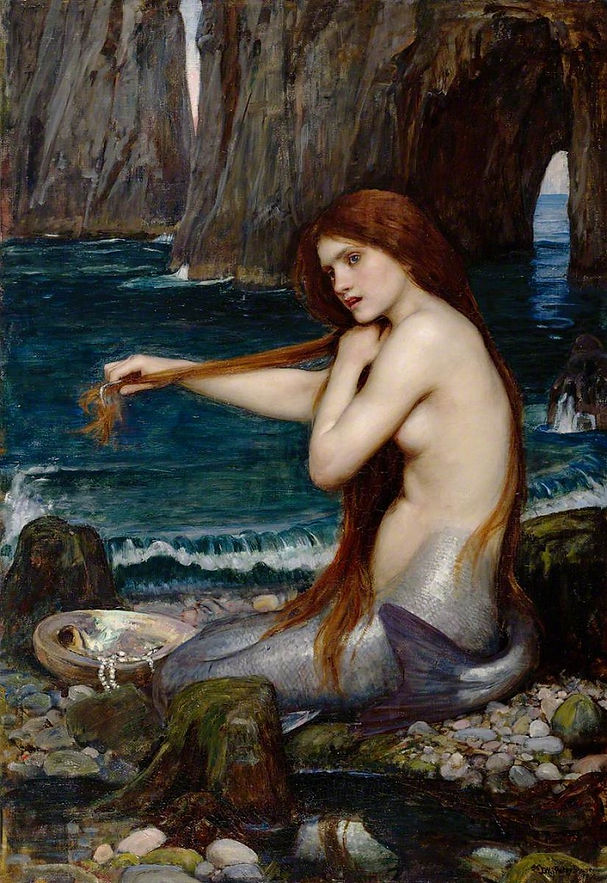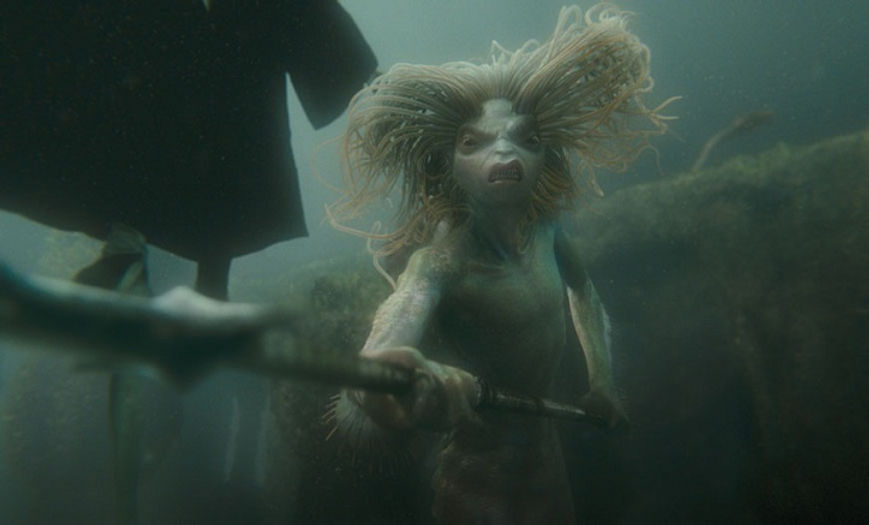
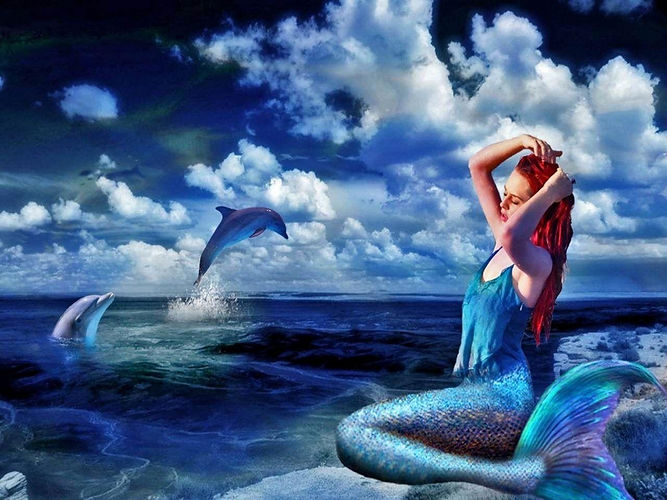

In folklore, a mermaid is an aquatic creature with the head and upper body of a female human and the tail of a fish.[1] Mermaids appear in the folklore of many cultures worldwide, including Europe, Latin America, Asia, and Africa.
Mermaids are sometimes associated with perilous events such as storms, shipwrecks, and drownings (cf. § Omens). In other folk traditions (or sometimes within the same traditions), they can be benevolent or beneficent, bestowing boons or falling in love with humans.
The male equivalent of the mermaid is the merman, also a familiar figure in folklore and heraldry. Although traditions about and reported sightings of mermen are less common than those of mermaids, they are in folklore generally assumed to co-exist with their female counterparts. The male and the female collectively are sometimes referred to as merfolk or merpeople.
The Western concept of mermaids as beautiful, seductive singers may have been influenced by the sirens of Greek mythology, which were originally half-birdlike, but came to be pictured as half-fishlike in the Christian era. Historical accounts of mermaids, such as those reported by Christopher Columbus during his exploration of the Caribbean, may have been sightings of manatees or similar aquatic mammals. While there is no evidence that mermaids exist outside folklore, reports of mermaid sightings continue to the present day.
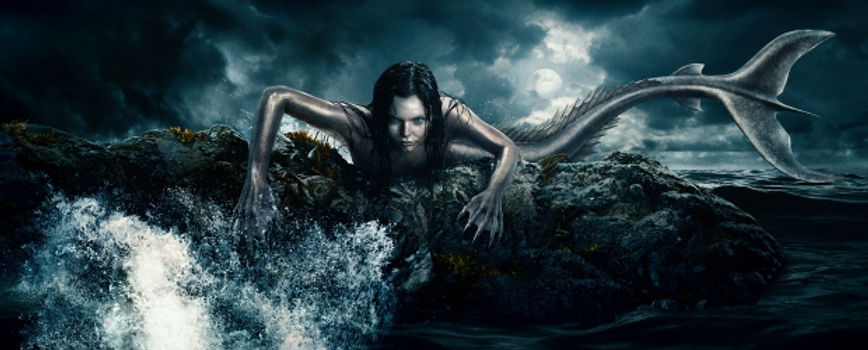
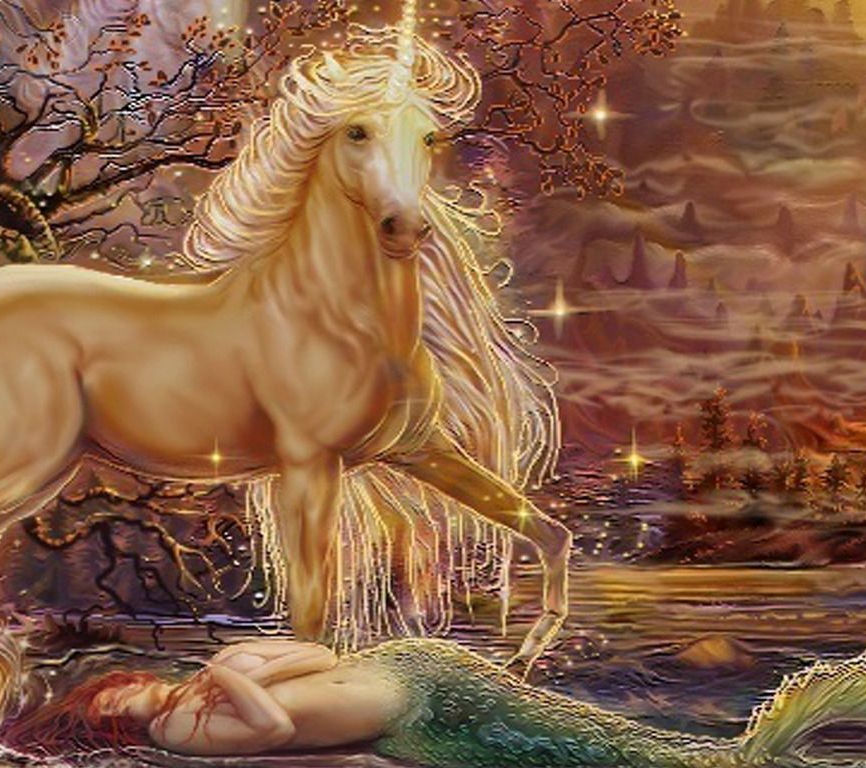
mermaid, a fabled marine creature with the head and upper body of a human being and the tail of a fish. Similar divine or semidivine beings appear in ancient mythologies (e.g., the Chaldean sea god Ea, or Oannes). In European folklore, mermaids (sometimes called sirens) and mermen were natural beings who, like fairies, had magical and prophetic powers. They loved music and often sang. Though very long-lived, they were mortal and had no souls.
Many folktales record marriages between mermaids (who might assume human form) and men. In most, the man steals the mermaid’s cap or belt, her comb or mirror. While the objects are hidden she lives with him; if she finds them she returns at once to the sea. In some variants the marriage lasts while certain agreed-upon conditions are fulfilled, and it ends when the conditions are broken.
The Little Mermaid sculptureThe Little Mermaid, bronze sculpture by Edvard Eriksen, 1913, modeled after a story by Hans Christian Andersen; in Copenhagen harbor.
Though sometimes kindly, mermaids and mermen were usually dangerous to man. Their gifts brought misfortune, and, if offended, the beings caused floods or other disasters. To see one on a voyage was an omen of shipwreck. They sometimes lured mortals to death by drowning, as did the Lorelei of the Rhine, or enticed young people to live with them underwater, as did the mermaid whose image is carved on a bench in the church of Zennor, Cornwall, England.
Aquatic mammals, such as the dugong and manatee, that suckle their young in human fashion above water are considered by some to underlie these legends.
15 myths, legends and facts about mermaids – A mermaid is a female creature which is half-human and half-fish. An entity born from the imagination of man, it is but a legend. Mermaids have often been mentioned in legends and folklore stories, each giving an individual twist to the identity and characteristics of the organism.
1. Mermaid stories are not restricted to one specific region of the world. Rather, they are told all across the globe, from Europe to Africa and Asia.
2. The first stories about mermaids might have all started in ancient Assyria.
3. The first stories on mermaids which emerged in Assyria mention a goddess named Atargatis who metamorphosed into a mermaid after being overwhelmed by guilt at having unintentionally killed her mortal lover.
4. Mermaids might be a variation of Greek mythology’s creatures, the Sirens.
5. They have also been ‘sighted’ by humans in the past: from Christopher Columbus to other sailors spending lots of time at sea.
6. Our contemporary world is not unfamiliar with such reports. People still come up with stories of mermaid sightings.
7. The modern notion of mermaids comprises mostly a sexy, beautiful, and captivating female half-human creature. In some traditions, they are kind creatures with powers.
8. Mermaids are also often said to be able to fall in love with humans— after which they set out to find a ‘cure’ to get rid of their fish tail for legs.
9. Nice mermaids have inspired children stories, and other works of art like paintings and operas.
10. However, mermaids are not always restricted to being nice. Rather, some stories describe them as being portents of bad luck. They are often associated with calamities like storms, shipwrecks, and drowning. Mermaids from Greek legends can even sink ships.
11. Being unkind to them might bring misfortune to the perpetrator, say other myths. Also, we cannot forget the merpeople of the Harry Potter world, can we?! JK Rowling gave a new twist to this type of creature in her Harry Potter series. They were depicted as ugly and aggressive.
12. Stories describing mermaids as full of mischief mention how they seduce and lure human males to their deep-sea homes.
13. Mermaids are not only beautiful in such stories, but they also have another ruse to get men lose their minds over them: they will sing irresistible melodies to grasp the attention of the men.
14. Some legends say that mermaids are soulless.
15. Yet others believe mermaids are immortal.


